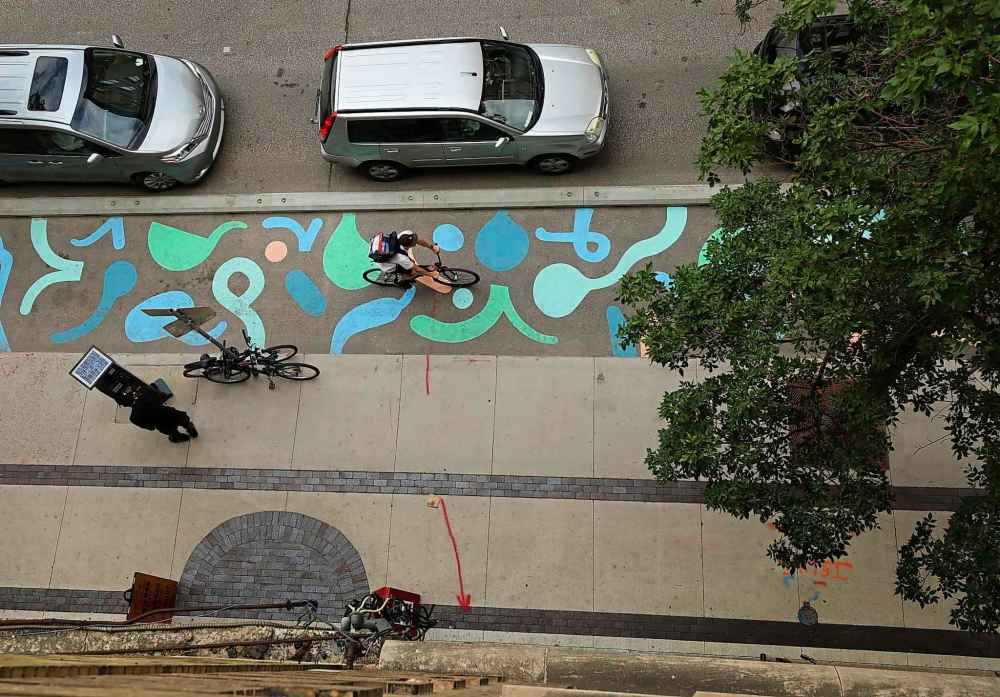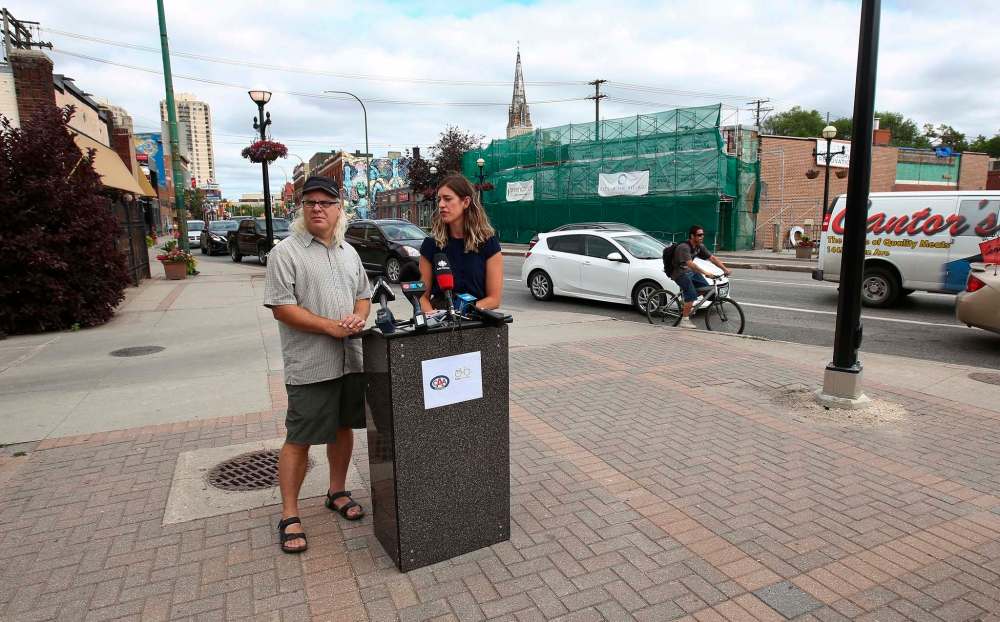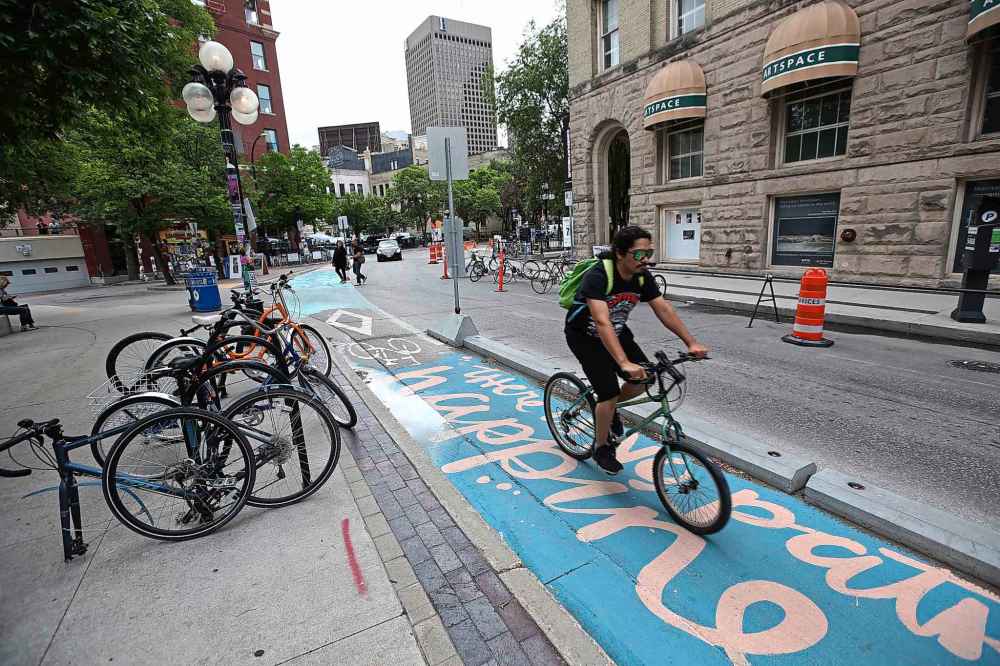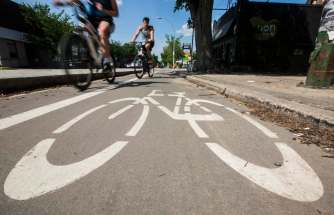Pedal power More than a third of Winnipeggers would cycle more if city were bike-friendly: survey
Read this article for free:
or
Already have an account? Log in here »
To continue reading, please subscribe:
Monthly Digital Subscription
$0 for the first 4 weeks*
- Enjoy unlimited reading on winnipegfreepress.com
- Read the E-Edition, our digital replica newspaper
- Access News Break, our award-winning app
- Play interactive puzzles
*No charge for 4 weeks then price increases to the regular rate of $19.00 plus GST every four weeks. Offer available to new and qualified returning subscribers only. Cancel any time.
Monthly Digital Subscription
$4.75/week*
- Enjoy unlimited reading on winnipegfreepress.com
- Read the E-Edition, our digital replica newspaper
- Access News Break, our award-winning app
- Play interactive puzzles
*Billed as $19 plus GST every four weeks. Cancel any time.
To continue reading, please subscribe:
Add Free Press access to your Brandon Sun subscription for only an additional
$1 for the first 4 weeks*
*Your next subscription payment will increase by $1.00 and you will be charged $16.99 plus GST for four weeks. After four weeks, your payment will increase to $23.99 plus GST every four weeks.
Read unlimited articles for free today:
or
Already have an account? Log in here »
Hey there, time traveller!
This article was published 24/07/2018 (2694 days ago), so information in it may no longer be current.
CAA and Bike Winnipeg are attempting to steer cycling infrastructure out of the margins and into the centre of political debates in the leadup to the civic election in October.
And if the result of a new Probe Research poll conducted for the agencies is any indication, their message is likely to resonate with at least a third of Winnipeggers.

The poll, conducted June 5-19, asked 600 adults a series of questions about cycling, finding 21 per cent of residents are regular cyclists and 35 per cent said they would cycle more if the city was more bike-friendly.
“With 21 per cent of people out there biking on a regular basis, it means it’s an issue for them. It’s definitely something I think is going to come up at the door, and if you’re a wise candidate you’re going to make sure it’s part of your platform,” Bike Winnipeg executive director Mark Cohoe said Tuesday.
The 21 per cent of regular cyclists identified in the poll is the highest self-reported figure his group has seen to date, he said.
!function(e,t,n,s){var i=”InfogramEmbeds”,o=e.getElementsByTagName(t)[0],d=/^http:/.test(e.location)?”http:”:”https:”;if(/^/{2}/.test(s)&&(s=d+s),window[i]&&window[i].initialized)window[i].process&&window[i].process();else if(!e.getElementById(n)){var a=e.createElement(t);a.async=1,a.id=n,a.src=s,o.parentNode.insertBefore(a,o)}}(document,”script”,”infogram-async”,”https://e.infogram.com/js/dist/embed-loader-min.js”);
According to Probe Research, the random phone poll — landline and cellphone numbers were called — offers 95 per cent certainty the results are within a plus or minus four percentage point range of what they would be if Winnipeg’s entire adult population had been queried.
In the 2016 Statistics Canada census, 6,200 Winnipeggers (0.87 per cent of the city’s population) reported cycling was their main mode of commuting to work.

In the poll, a regular cyclist was defined as someone who pedals to work daily or several times a week for transportation.
The data released Tuesday was the first instalment in a three-part series focused on the city’s appetite for cycling and the obstacles currently in place preventing people from hitting the road on two wheels, rather than four.
Liz Kulyk, CAA’s corporate manager of government and community relations, said the release of the poll results were purposefully timed to coincide with the run-up to the municipal election.

The next two instalments in the series will take a closer look at the safety concerns raised by cyclists (Aug. 8) and will also call on council and mayoral candidates to make improved cycling infrastructure a part of their campaign platforms (Aug. 29), she said.
“Of all the issues facing our city, this is the one where we can really capitalize and move our city forward. There’s lots of things, visionary ideas, that you’re going to hear from various candidates in the election — ‘do this, don’t do that,’” Kulyk said.
“What we can tell you is if we want to move Winnipeg forward to a city of one million (residents) and continue to grow and be an economic hub, we can’t not tackle this one head-on.”
When respondents were asked what the biggest barrier to becoming an active cyclist was, the issue of protected bike lanes on major routes quickly jumped to the top of the list.
Nearly half of the Winnipeggers polled (47 per cent) also said building protected bike lanes in the downtown core should be the city’s top priority.
!function(e,t,n,s){var i=”InfogramEmbeds”,o=e.getElementsByTagName(t)[0],d=/^http:/.test(e.location)?”http:”:”https:”;if(/^/{2}/.test(s)&&(s=d+s),window[i]&&window[i].initialized)window[i].process&&window[i].process();else if(!e.getElementById(n)){var a=e.createElement(t);a.async=1,a.id=n,a.src=s,o.parentNode.insertBefore(a,o)}}(document,”script”,”infogram-async”,”https://e.infogram.com/js/dist/embed-loader-min.js”);
Kulyk believes that too often the issue of cycling infrastructure pits cyclists and drivers against each other, when — in reality — what’s good for one is good for the other.
“More people cycling and leaving their car at home means better roads. We’re seeing record construction in our city right now and we’re doing a lot of wholesale changes to some pretty main thoroughfares,” she said.
“There should not be a single decision made about those wholesale changes to roads without also considering what is the best way forward to ensure cyclists and drivers and everybody using the road gets to use it in the most efficient and safe way possible.”
ryan.thorpe@freepress.mb.ca Twitter: @rk_thorpe

Ryan Thorpe likes the pace of daily news, the feeling of a broadsheet in his hands and the stress of never-ending deadlines hanging over his head.
Our newsroom depends on a growing audience of readers to power our journalism. If you are not a paid reader, please consider becoming a subscriber.
Our newsroom depends on its audience of readers to power our journalism. Thank you for your support.
History
Updated on Wednesday, July 25, 2018 10:02 AM CDT: Tweaks subheadline









